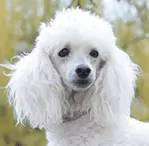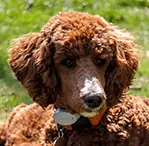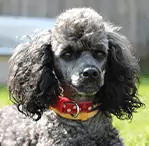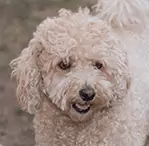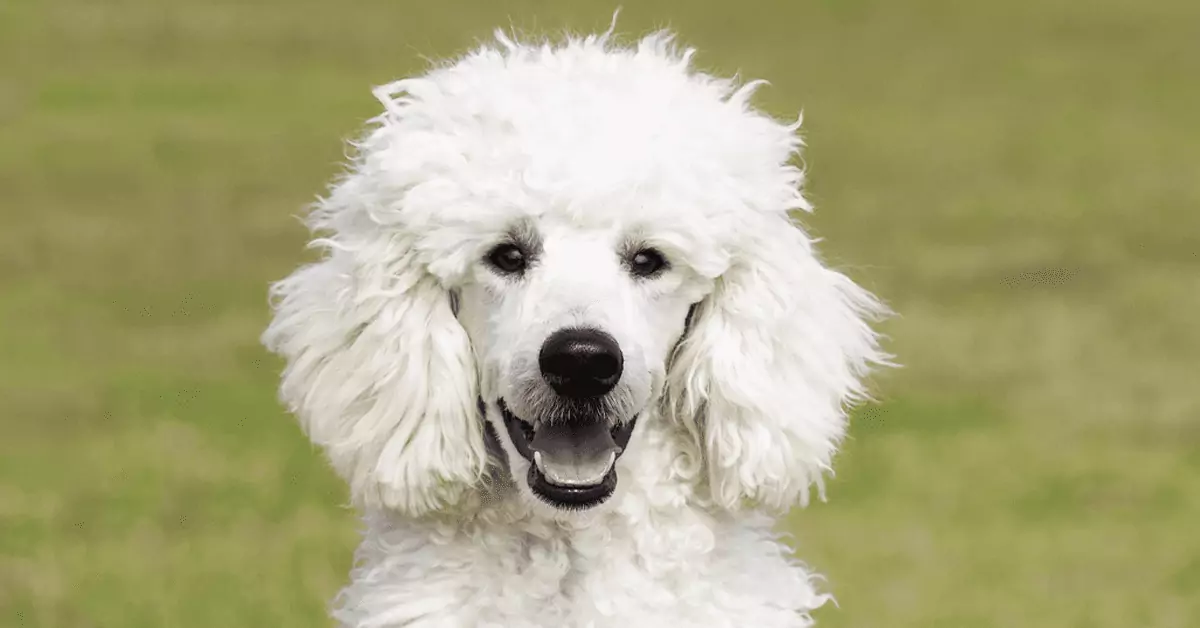
Meet the Poodle
High Doggy I.Q.
Canine Comedian
Best Fur Friend
My Many Looks
My Breed Characteristics
Furbulous Fact
As I Grow Up
History of My Breed
Care Tips
Training Tips
Personality
Funny
Loving
Smart
Group
Non-Sporting (Standard and Miniature)
Origin
Germany
Life Span
10-18 Years
Breed Popularity
#6 of 195
Height Range
Standard: Over 15 Inches Miniature: 10-15 Inches Toy: Under 10 Inches
Weight Range
Standard: 40-70 Pounds Miniature: 10-15 Pounds Toy: 4-6 Pounds
Coat Details
Type
Long and Curly
Texture
Wiry
Features
Colors
Apricot, Black, Blue, Brown, Cream, Gray, Red, Silver, Silver Beige, White
Hypoallergenic
Yes
Cost to Buy
$600-$2,000
Lifetime Care Cost
$28,260
My Many Looks
My Breed Characteristics
Furbulous Fact
As I Grow Up

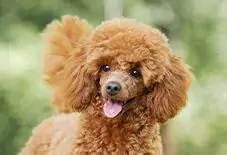

History of My Breed
Care Tips
from Dr. Jessica Greenberg, Associate VeterinarianGet regular X-rays to monitor for hip dysplasia.
Hip dysplasia is extremely common in Standard Poodles. Routine X-rays can diagnose this joint condition in puppies, and should be performed regularly on at-risk breeds like the Standard Poodle. Most veterinarians suggest yearly X-rays to monitor for any joint changes as the years go by.
Feed your Poodle carefully to avoid bloat.
Due to their deep chests, Standard Poodles are at risk of GDV (bloat). The best way to prevent this condition is to avoid strenuous activity in the hour after they eat. Standard Poodle parents should also break up their meals into smaller portions throughout the day.
Monitor your Poodle’s skin for signs of allergies.
Poodles are prone to developing canine allergies (environmental, food, and contact). It is important to monitor your dog for any signs of skin irritation, skin redness, dry skin, or itching, as this can be a sign of potential allergies in your furry friend.
Training Tips
from Dr. Jessica Greenberg, Associate VeterinarianStart your training with basic commands.
Poodles can get bored easily when they are being trained. They can also be stubborn, so it's important to have a good training method planned. First, you should teach your Poodle their name by repeating it in a loud voice to command their attention. When your puppy looks at you, they then get a reward. Repeat this process a few times to teach them that a verbal command is a call for their attention. Next, you should teach your pup to "stay," "lie down," "sit," and "come." The most important command is "heel" since knowing this command will allow you to safely take them for a walk while maintaining complete control over their behavior.
Create a comfy space for effective crate training.
Poodles easily recognize behavior patterns, making them pretty easy to crate train. However, they do have a pretty strong stubborn streak. To make crate training easier, ensure the crate you choose creates the feeling of being in a den but is also large enough that your Poodle can stand up in it. You should also include soft bedding, preferably a dog bed they have slept in before. Also include some of their favorite toys to help make this feel like your Poodle's personal space. They will thrive in a small space environment that feels as though they have it all to themselves.
Begin potty training as early as possible.
Poodles are pretty easy to house train thanks to their intelligence. However, stubbornness can still be an issue. Make sure you train your Poodle when they are still pretty young, preferably under 6 months of age. To effectively house train your Poodle, you can use a crate to help prevent accidents when you’re not home. After using the crate for a while, you can then take them outside where they will typically go to the bathroom. Repeat this step a few times and your Poodle will start to understand that they should only go to the bathroom outside.
My Many Looks
My Breed Characteristics
Furbulous Fact
As I Grow Up
History of My Breed
Care Tips
Training Tips
-
Personality
Funny
Loving
Smart
-
Group
Non-Sporting (Standard and Miniature)
-
Origin
Germany
-
Life Span
10-18 Years
-
Breed Popularity
#6 of 195
-
Height Range
Standard: Over 15 Inches Miniature: 10-15 Inches Toy: Under 10 Inches
-
Weight Range
Standard: 40-70 Pounds Miniature: 10-15 Pounds Toy: 4-6 Pounds
-
动物皮毛
Type
Long and Curly
Texture
Wiry
Features
Colors
Apricot, Black, Blue, Brown, Cream, Gray, Red, Silver, Silver Beige, White
-
Hypoallergenic
Yes
-
Cost to Buy
$600-$2,000
-
Lifetime Care Cost
$28,260
